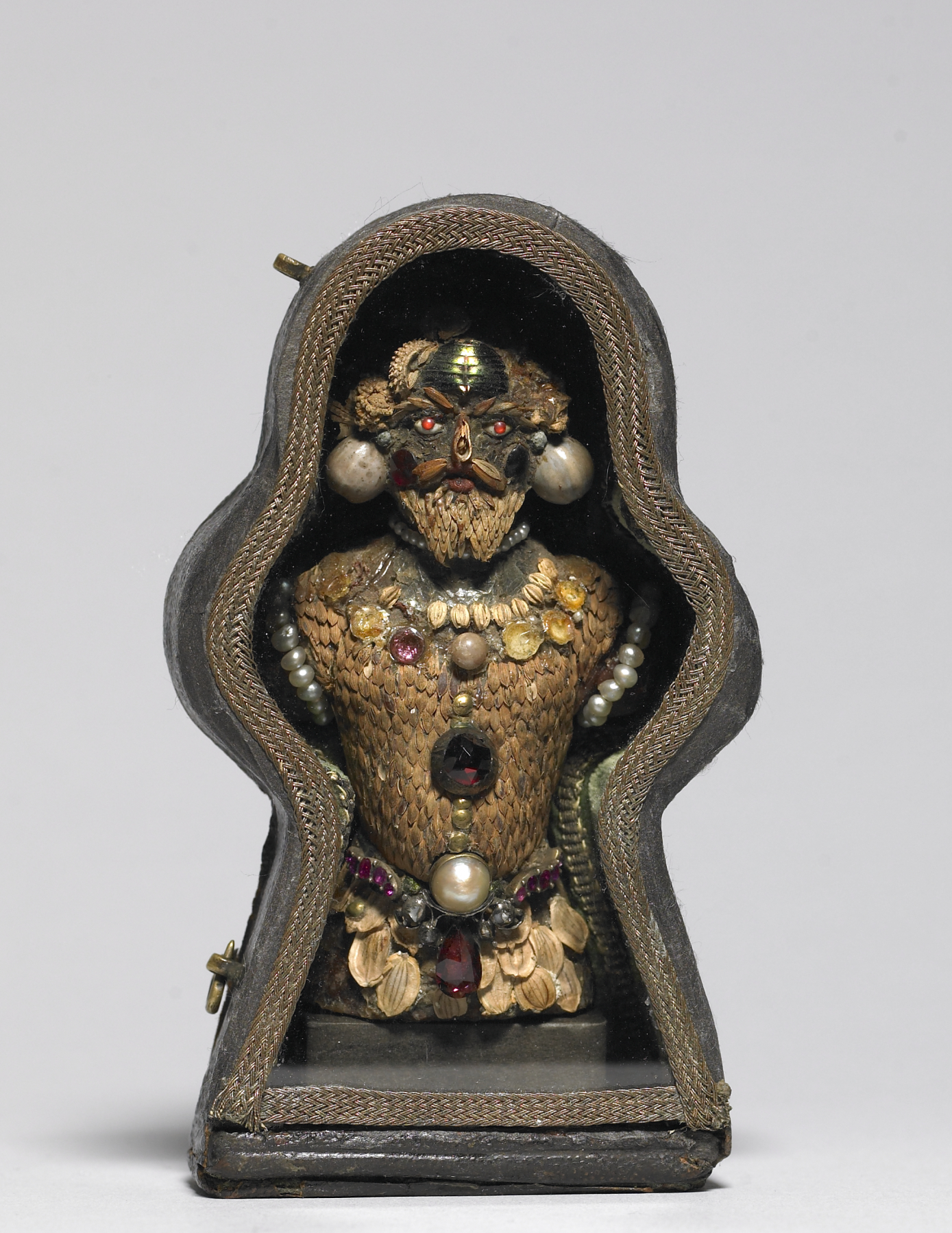Curiosity Figure (Seed Man)
(Baroque Europe )
This is a rare example of a kind of bizarre composite figure that achieved popularity around 1600, especially in Milan. The most famous exponent was Guiseppe Arcimboldo (1527-1593), whose painted portraits combining carefully observed natural elements were at once intriguing inventions and serious allegories, for example his Portrait of Emperor Rudolf II as Vertumnus, Lord of the Seasons in which he flatters the emperor by suggesting that imperial power encompasses nature itself.
Made of materials ranging from seeds to a beetle abdomen to pearls, around a wax core, this curious figure exemplifies the notion of human beings as encompassing all the virtues and frailties of the physical world. The 1598 inventory of the collection of the duke of Bavaria included a small Mexican "idol" decorated with seeds and nuts. This is lost but may have inspired this type of figure. Due to his fragility, the figure stays in his (original) case.
Provenance
Provenance (from the French provenir, 'to come from/forth') is the chronology of the ownership, custody, or location of a historical object. Learn more about provenance at the Walters.
Nicholas Landau, Paris [date and mode of acquisition unknown]; Walters Art Museum, 1970, by purchase.
Exhibitions
| 1971-1972 | World of Wonder. The Walters Art Gallery, Baltimore. |
Measurements
3 1/4 in. (8.3 cm)
Credit Line
Museum purchase, 1970
Location in Museum
Accession Number
In libraries, galleries, museums, and archives, an accession number is a unique identifier assigned to each object in the collection.
In libraries, galleries, museums, and archives, an accession number is a unique identifier assigned to each object in the collection.
75.26


